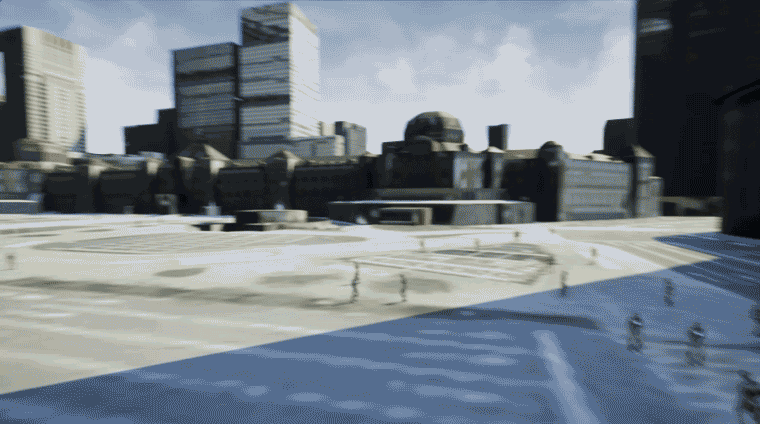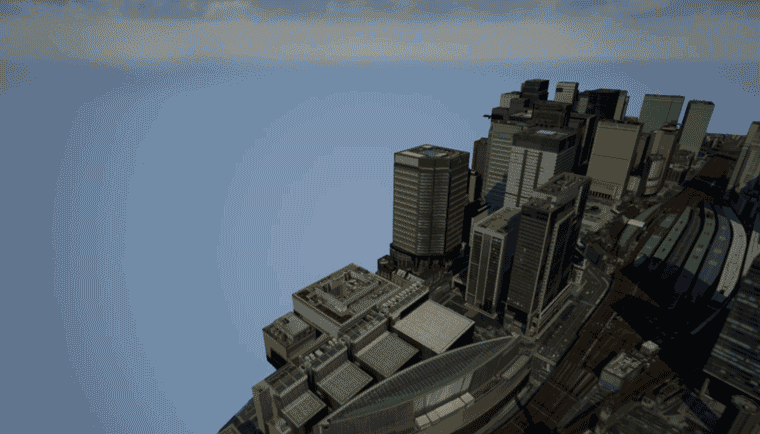Introduction:
Asia Quest Co., Ltd., which operates a DX business, expresses data in 3D on a web browser.
We are developing a system that utilizes Web3D technology. Introduced mainly in the construction and real estate industries
We asked Mr. Obata of Asia Quest Co., Ltd. about the DX business and what possibilities the system has.
We asked him about the background of Web3D technology development.
●Person who answered

Asia Quest Co., Ltd.
Sales Department Manager
Mr. Yoshiki Obata
Regarding initiatives for DX by companies, etc.
Secretariat: First, please give us an overview of your company's business.
Obata: Our company is developing a digital transformation business that supports new value creation by combining digital technologies such as IoT, AI, Cloud, Web, and Mobile. The companies supporting DX business are diverse, including construction/real estate, information and communications, manufacturing, wholesale/retail, and local governments.
Secretariat:What are the customer issues that can be solved through the DX business?
Obata: One is the gap between digitalization and digitalization. Although customers have made progress in digitalization, they may feel that they have not reached the original purpose of DX, which is digitalization. Digitalization is not just about digitizing data, but also about using it to effectively improve business processes and decision-making.
In addition, DX requires not only technology, but also changes in organizational culture and leadership, in other words, organizational reform. When new work methods and communication methods are introduced using digital technology, top-down support is required for the entire organization to adapt to the system. Leadership must understand the priorities of DX and create a culture that encourages employees to participate in the transformation.
In addition to organizational reform, the lack of digital human resources is also an issue that needs to be resolved. To take advantage of digital technology, employees need to acquire new skills and knowledge. In promoting DX, it is also important for organizations to provide training and education programs and create an environment where employees can easily acquire the necessary skill sets.
Secretariat: What do you think is the reason for the increased interest in DX in each industry?
Obata:I think that "visualization" of data will be one of the keywords.
Taking the construction and real estate industries as an example, a large amount of data is accumulated at each of the construction, design, and sales sites, but this data may not be utilized effectively. I think one of the reasons for this is that the interface of the data handling system is outdated and difficult to visualize. When considering the introduction of a system that will be used in the field where data is actually handled, an intuitive and easy-to-understand UI (user interface) is required. At our company, we are working on a Web3D system as a service to resolve these issues.
About “visualization” using the Web3D system
Secretariat:What is Web3D?
Obata: Web3D refers to a system that displays 3D content on a web browser, and can provide a more intuitive UI/UX (user experience). Although it is easy to get confused because the names are similar, it is completely different from Web 3.0.
The Web3D system makes it possible to display 3D content on a web browser by utilizing gaming engines such as Unreal Engine and Unity, and programming technology such as Three.js. We can expect to create new value in various situations.


Secretariat:What do you think is the key to the spread of Web3D?
Obata: First, since the days when flat display of content was the mainstream, the processing power of devices has improved with the development of 3D technology for gaming, and the things that can be realized on the edge side have technically increased. I believe that Web5D technology has become popular due to a combination of factors, such as the spread of 3G and the development of cloud technology, which solve the problems faced by users who wanted to display content in 3D.
In addition, during dialogue with customers who supported DX conversion using Web3D technology, we learned that information that had previously been expressed in two dimensions could be transformed into data by visualizing three-dimensional three-dimensional information such as depth. I heard that you can feel the improvement in visibility. In addition to these primary benefits, we have also received feedback that the adoption of an interface that makes it easy to handle data has psychological effects, such as motivating people to use the system in the field.
Secretariat:Please tell us about the background of Web3D development.
Obata: The development of Web3D began as we responded to the IoT industry through our own IoT products. It is said that Web3D technology originally began with game engines. You may have been surprised by the richness of the images while actually playing a game, but we thought it would be possible to apply this Web3D technology, which is being developed in the game industry, to business as well.
The main problem was the difficulty of differentiation strategy. The points of differentiation that companies are looking for in IoT products are high precision, low price, energy saving, and compactness, which is difficult for us as a system integrator to appeal to. On the other hand, IoT vendors have focused more on providing data and less on visualization in web interfaces.
However, our client, a leading company in the BIM (Building Information Modeling) industry, recognized the importance of presentation and was particularly interested in 3D technology. During our discussions with them, we received the suggestion that good design is needed on site, and in the BIM industry, it should be 3D.
Secretariat:Please tell us about possible use cases for Web3D in each industry.
Obata:For example, in the construction and real estate industries, managers can use the Web3D system to manage multiple sites at once without having to visit the sites.
In the retail industry, there are cases where Web3D systems are used to provide a complete image of a custom-made product by combining parts on the screen. Since it is possible to display and incorporate parts that are not yet completed on the screen, we believe that the degree of freedom for customization on the user's side will increase.
The Next Development
Secretariat:Please tell us about the future outlook for Web3D.
Obata: Regarding the future of Web3D, we aim to transform it from a display board to a control panel. It is currently being used as a monitoring device, but we are considering using it as an interface for the increasing number of on-site robot operations. For example, when using a robot to transport materials from the 1st floor to the 12th floor, if the robot could simply drag and drop materials on a 3D model instead of using a conventional controller, the burden on site workers could be significantly reduced. can make it, right.

We also believe that initiatives that utilize generative AI technology are necessary.
We provide a new UX that utilizes generative AI technology, such as music, video, audio, and 3D model generation.

Secretariat:Do you have any expectations for next-generation communications that will help realize such future developments?
Obata: Communication instability and delays cannot be tolerated when operating a robot through a screen. Similar to the "upstream communication" that receives data when you want to move the robot on the screen, the specifications of the PC and communication standards become a physical barrier when real-time performance is required for the "downstream communication" that gives instructions. I think it will be.
Considering these future developments, digital twins will require real-time performance and large-capacity data. When operating a robot through a browser, if there is a time lag between data transmission and reception, it becomes difficult to accurately control the robot's movements, so a delay of even a few seconds is unacceptable in the actual field. Also, if you upload higher resolution image/video data to the cloud and display it on your browser, the amount of data will inevitably increase.
In this sense, we believe that the next generation communication technology, Beyond 5G, will be a major turning point.
Secretariat:thank you very much.


